
NGC 512, also occasionally referred to as PGC 5132 or UGC 944, is a spiral galaxy in the constellation Andromeda. It is located approximately 217 million light-years from the Solar System and was discovered on 17 November 1827 by astronomer John Herschel.

NGC 4540 is a spiral galaxy with type 1 Seyfert activity located about 64 million light-years away in the constellation Coma Berenices. NGC 4540 was discovered by astronomer William Herschel on March 21, 1784 and is a member of the Virgo Cluster.

NGC 530, also known as IC 106, is a lenticular galaxy in the constellation Cetus. It is approximately 226 million light years from the Milky Way and has a diameter of around 100,000 light years. The object was discovered on November 20, 1886, by the American astronomer Lewis A. Swift, who listed it as NGC 530, and rediscovered on November 16, 1887, by Guillaume Bigourdan, who listed it as IC 106.
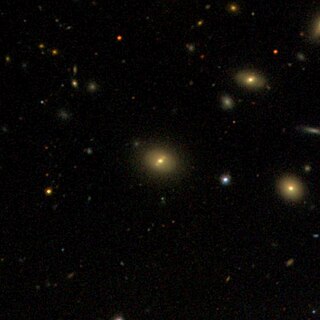
IC 4026 is a type S0 lenticular galaxy with a bar located in Coma Berenices. It is located 315 million light-years away from the Solar System and has an approximate diameter of 70,000 light-years which is less the size of the Milky Way. IC 4026 was discovered on May 11, 1896, by astronomer Hermann Kobold and is a member of the Coma Cluster. It has a surface brightness of 11.99 mag/arcsecs meaning it is a high surface brightness galaxy.

NGC 3758 known as the Owl Galaxy, is a type Sb spiral galaxy in the constellation of Leo. It is located 447 million light-years from the Solar System and an approximate diameter of 70,000 light-years. NGC 3758 was discovered by Ralph Copeland on March 18, 1874, but also independently discovered by Edouard Stephan ten years later.

NGC 3750 is a lenticular galaxy with a bar located in the constellation of Leo. It is located 450 million light-years from the Solar System and was discovered by Ralph Copeland on February 9, 1874.

NGC 3748 is a lenticular galaxy with a bar located in the Leo constellation. It is located 440 million light-years away from the Solar System and was discovered by Ralph Copeland on April 5, 1874, but also observed by Hermann Kobold, Lawrence Parsons and John Louis Emil Dreyer.
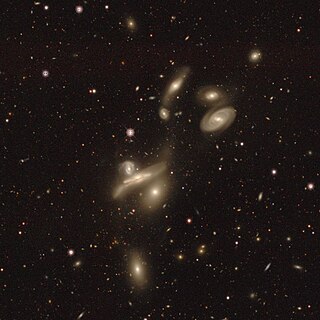
NGC 3745 is a lenticular galaxy with a bar structure located in the constellation of Leo. NGC 3745 is located 471 million light-years away from the Solar System and was discovered by Ralph Copeland on April 5, 1874, but also observed by Hermann Kobold, Lawrence Parsons and John Louis Emil Dreyer.

NGC 3751 is a type E-S0 lenticular galaxy located in the Leo constellation. It is located 450 million light-years away from the Solar System and was discovered by Ralph Copeland on April 5, 1874.
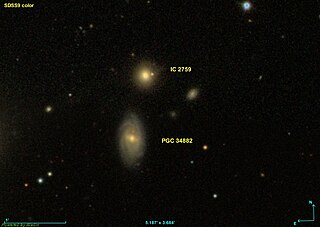
IC 2759 is a small type E elliptical galaxy located in the constellation of Leo. It is located 350 million light-years away from the Solar System and was discovered on April 24, 1897, by Guillaume Bigourdan. Sometimes IC 2759 is confused with the spiral galaxy, PGC 34882 which is located south of the galaxy.
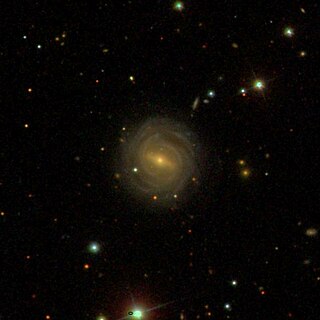
NGC 7222 is a large barred spiral galaxy with a ring structure, located in the constellation Aquarius. It is located 570 million light-years away from the Solar System and was discovered by German astronomer, Albert Marth on August 11, 1864.

IC 4539 is a type SABb intermediate spiral galaxy located in Corona Borealis. Its redshift is 0.061307, which corresponds IC 4539 to be 845 million light-years from Earth. It has an apparent dimension of 0.40 x 0.4 arcmin, meaning the galaxy is about 95,000 light-years across. IC 4539 was discovered by Stephane Javelle on June 23, 1903, who found it "as faint, small, round with a very brighter middle."

IC 923 is a lenticular galaxy located in Ursa Major. Its redshift is 0.069243 which means the galaxy is 954 million light-years from Earth. IC 923 has apparent dimensions of 0.50 x 0.2 arcmin, meaning it is approximately 139,000 light-years across. IC 923 was discovered in June 1892, by Edward Emerson Barnard and is a member of galaxy group V1CG 588.

IC 2734 is a type SBc barred spiral galaxy seen edge-on, and located in the constellation Leo. Its redshift is 0.078901, which corresponds IC 2734 to be located 1.09 billion light-years from Earth. The galaxy has an apparent dimension of 0.60 x 0.2 arcmin, meaning it is approximately 190,000 light-years across. IC 2734 was discovered on March 27, 1906, by astronomer, Max Wolf.

IC 4160, also known as PGC 1677859, is a spiral galaxy located in Coma Berenices. Its redshift is 0.061443, which corresponds IC 4160 to be 846 million light-years from Earth. It has an apparent dimension of 0.40 x 0.2 arcmin, meaning the galaxy is 99,000 light-years across. IC 4160 was discovered by Max Wolf on January 27, 1904.
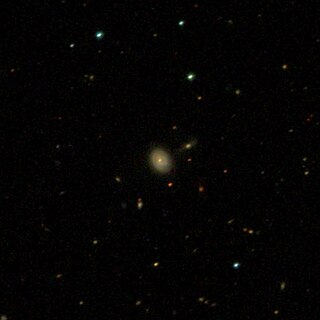
IC 4163 is a type Sbc peculiar galaxy located in Coma Berenices. Its redshift is 0.064038 which corresponds IC 4163 to be 858 million light-years from Earth. It has an apparent dimension of 0.40' x 0.3' arcmin and was discovered on January 27, 1904, by Max Wolf.

IC 2839, known as PGC 3472295, is a spiral galaxy located in the constellation Leo. Its redshift is 0.065734, which corresponds to the galaxy being located 906 million light-years from Earth. IC 2839 has an apparent dimension of 0.30 x 0.1 arcmin, meaning it spans 79,000 light-years across. The galaxy was discovered on March 27, 1906, by Max Wolf.

IC 2657 is a type E elliptical galaxy located in the constellation Leo. Its redshift is 0.167816, which means IC 2657 is 2.22 billion light-years away. IC 2657 is the second most distant Index Catalogue object after IC 4017 and the brightest cluster galaxy inside a small galaxy group called WHL J111508.7+134141. A large galaxy, measuring approximately 0.30 x 0.3 arcmin, it spans about 202,000 light-years across and was discovered by Max Wolf on March 27, 1906.

IC 3447 is a type Sc barred spiral galaxy located in the constellation Virgo. It has a redshift of 0.092479, which means IC 3447 is 1.27 billion light-years from Earth, making it one of the furthest objects in the Index Catalogue. The galaxy has apparent dimensions of 0.30 x 0.3 arcmin, which means IC 3447 is 111,000 light-years across. It was discovered by Royal Harwood Frost on May 10, 1904.
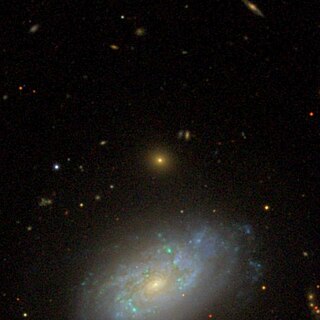
NGC 3950 is an elliptical galaxy of type E, in Ursa Major. Its redshift is 0.074602, meaning NGC 3950 is 1.03 billion light-years or 316 Mpc from Earth, which is within the Hubble distance values. This high redshift makes NGC 3950 one of the furthest New General Catalogue objects.


















